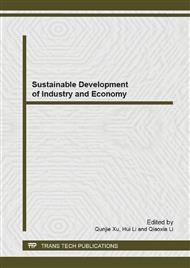[1]
Jiayi Ma, Pingjie Shao, Shaoping Liu: Shipping Management. Vol. 33 (2011), p.38. (In Chinese).
Google Scholar
[2]
Ministry of Transport. The emergency preparedness and emergency management regulations from Ships environmental in People's Republic of Marine Pollution. (In Chinese).
Google Scholar
[3]
Siqi Geng: The overall performance of oil recovery ships (Tianjin University Press, 2007). (In Chinese).
Google Scholar
[4]
Yue Zhang and Bokang Zhu: Journal of Zhejiang Ocean University (Nature Science). Vol. 32 (2013), p.81. (In Chinese).
Google Scholar
[5]
Jianfeng Yu, Yunhui Du and Haizhen Zhao: Environmental Protection. Vol. 19 (2012), p.69. (In Chinese).
Google Scholar
[6]
Yanli Liu: The oil spill risk assessment and emergency research in Chongqing water area. (Wuhan University Press, 2011). (In Chinese).
Google Scholar
[7]
Jingkun Xiao, Peihai Yan, Jianguo Lin, etc. The optimization and decision-making model of ship oil spill response equipment. Chinese Institute of Navigation Symposium. Conf. in China, 2003. (In Chinese).
Google Scholar
[8]
Abdulaziz S. Alidi and Taqi N. Al-Faraj: Geo Journal. Vol. 34, p.379.
Google Scholar
[9]
Gaiyun Gong and Sanyang Liu: The study and application of FCM algorithm parameters. (Xi'an University of Electronic Science and Technology Press, 2003). (In Chinese).
Google Scholar
[10]
Runling Yang: The fast automatic image segmentation algorithm based on weighted fuzzy c-means clustering. Chinese Journal of Image and Graphics . 2007. (In Chinese).
Google Scholar
[11]
Zheng P., McDonald M.: An Algorithm for High-Dimensional Traffic Data Clustering., Lecture Notes in Computer Science, (2006).
Google Scholar


